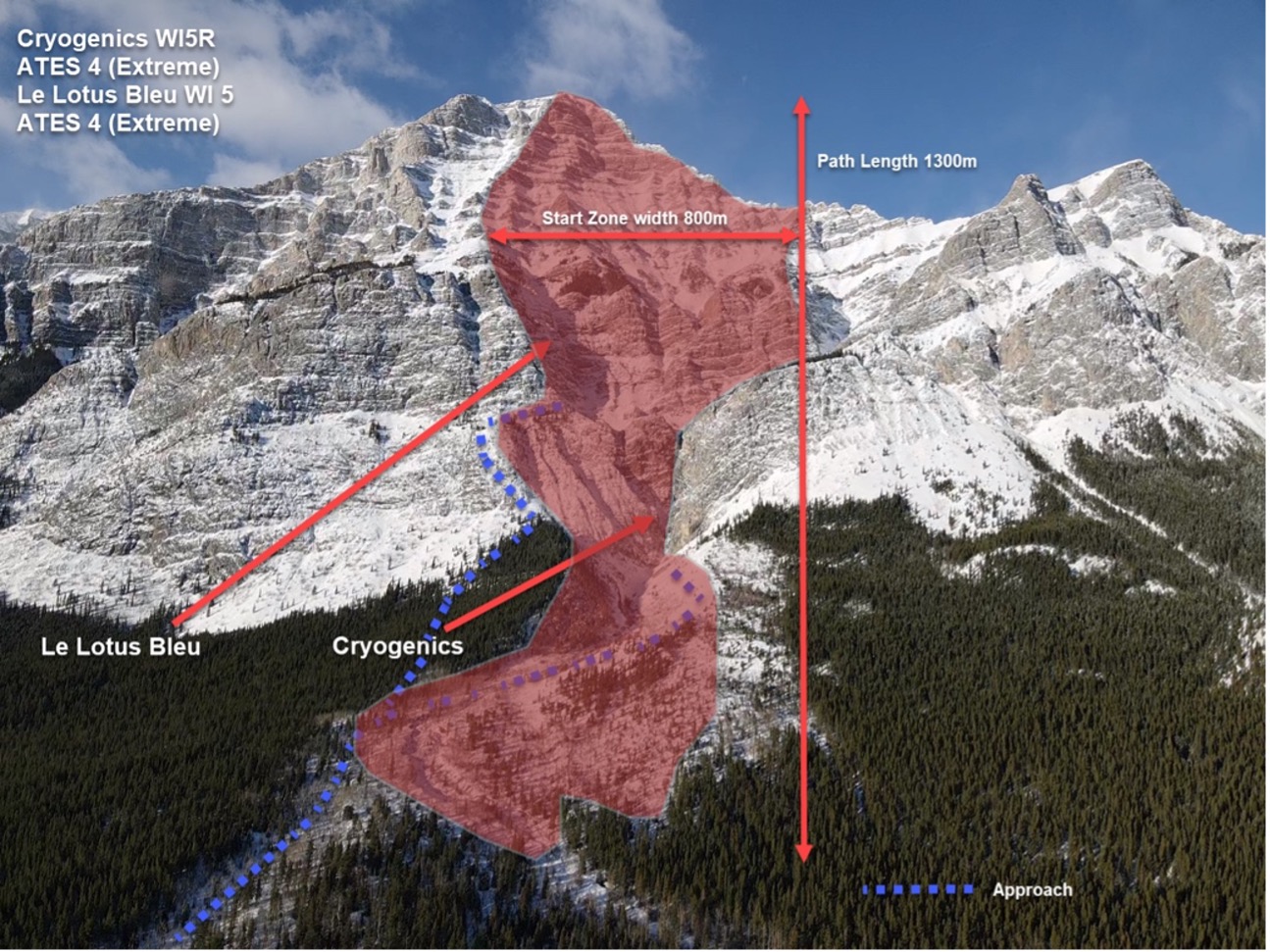
Kidd Falls Climb.
Cryogenics, ATES 4 (Extreme), WI 5R
Le Lotus Bleu, ATES 4 (Extreme), WI 5
Sinatra Falls, ATES 3 (Complex), WI 2
Popularity
- 16 People completed this survey
- 100% of respondents climbed these routes 1-5 times
Time of year and day for all Mt Kidd climbs
- The most common time for ascents and witnessing avalanche debris was February- April. December to January was the second most common time and October to November was least common
- 64% of avalanches witnessed occurred between 6:00am-12:00pm
- 43% of avalanches witnessed occurred between 12:00pm-18:00pm
- 7% of avalanches witnessed occurred between 1:00- 6:00am.
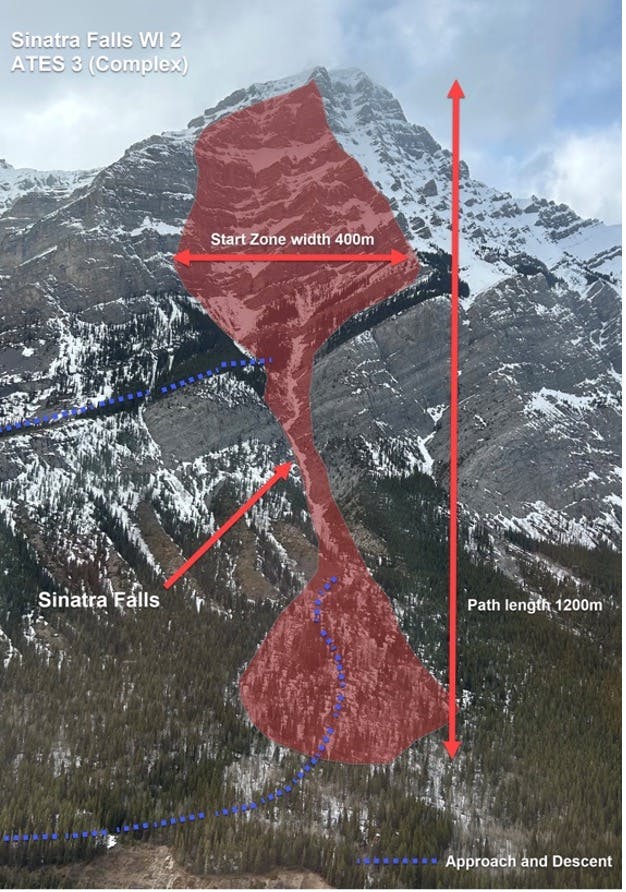
Runout debris
- 40% of responses reported seeing debris at the base of the climb
- 27% of responses reported seeing debris between pitches
- 20% of responses reported seeing debris above the last pitch
- 47% of responses reported never seeing debris
Notes on avalanche debris
- Debris has been reported on all climbs in this area.
- Debris was reported on the approach to Saddam’s Insane and below the climb.
- Debris was reported on the Sinatra Falls climb and above it.
- Kidd Bowl climb is completely buried by debris some years. Devonshire Wall is likely far enough away to avoid being a regular hazard, but it’s important to remember it is a potential risk. Keep an eye up towards Kidd Falls.
- Debris often enters the big north facing bowl with mixed climbing, Saddam’s Insane and Chicken are on the way.
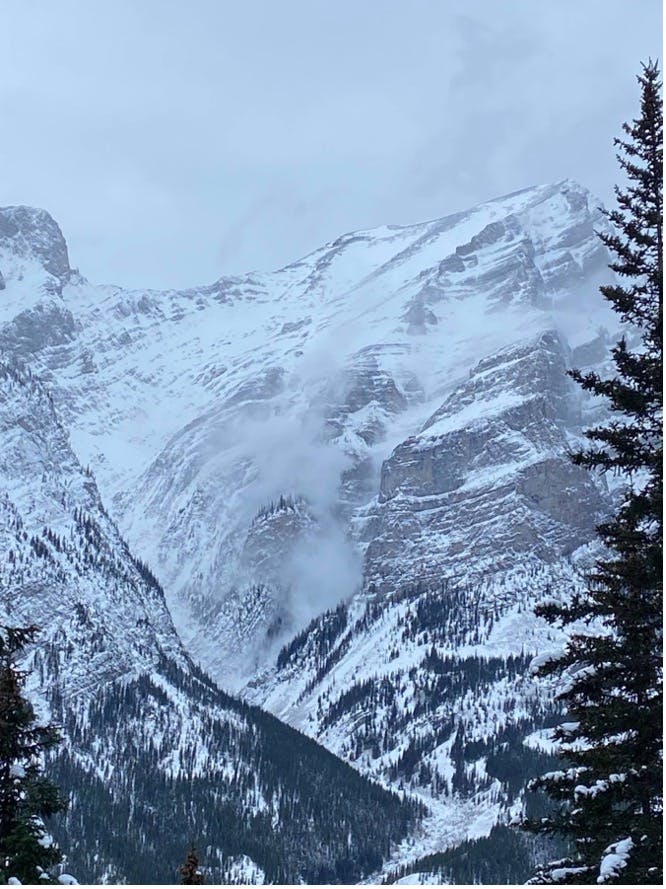
Avalanche over the Saddam's Insane climb, observed from Wedge Smear.
Reported avalanches and incidents
- An avalanche was reported on Cryogenics, 80 m beyond the route. The slab was estimated to be 1 m deep.
- Another metre deep slab was reported on Cryogenics and debris ran down the whole length of the climb. This avalanche was early in the season and the snowpack was thin.
- Avalanches up to size 3 are frequently reported on both Cryogenics and Saddam’s Insane.
- In the mid 2000s, a human-triggered wind slab was reported in the bowl or slope between the pitches of Sinatra Falls.
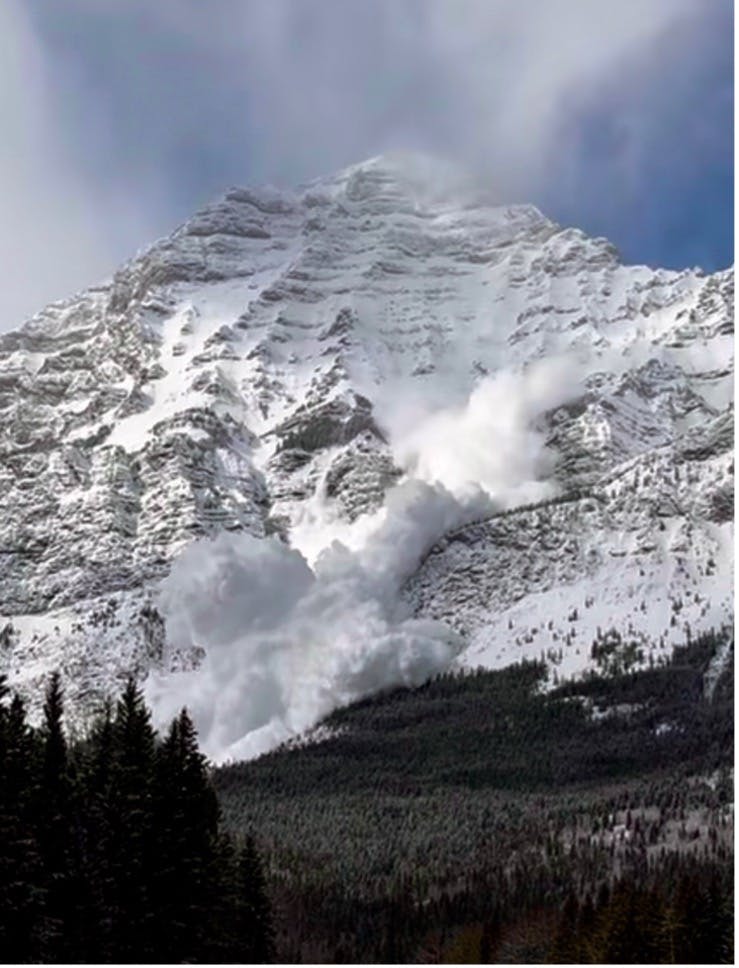
Large natural avalanches run over Cryogenics and Le Lotus Bleu climbs.
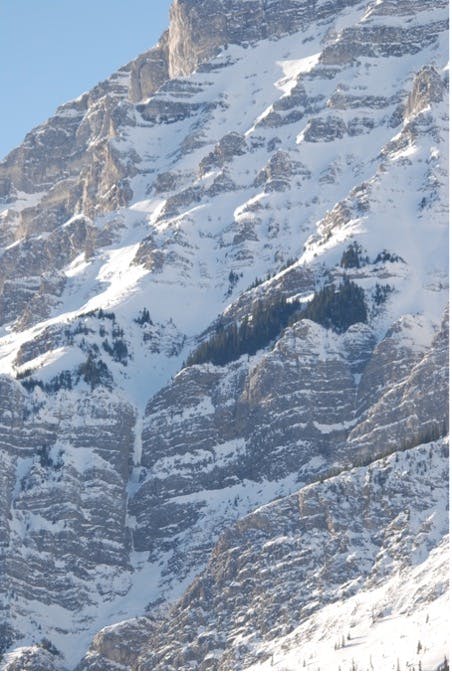
Contributing factors for all Mt Kidd climbs
- 88% were attributed to new snow amounts
- 40% were attributed to warming and solar radiation
- 24% were attributed to wind
- 10% were attributed to a cornice or human/animal trigger
- 7% were attributed to a known reactive layer
Summary
This is a big steep mountain with lots of rock around the climb and is often sunny. The best times to climb here are early season, when the place is dry, or when the avalanche danger is low and the weather is cold